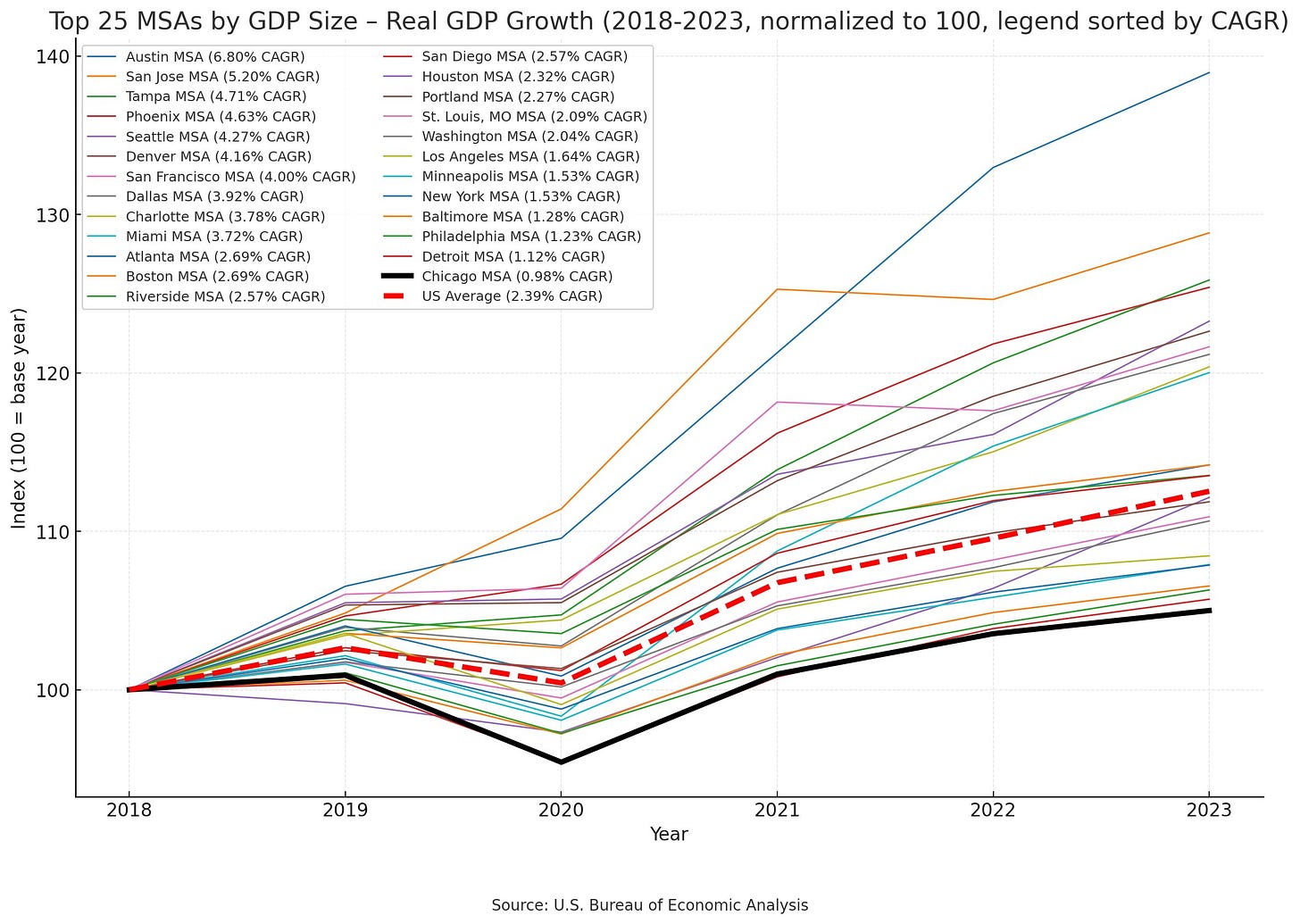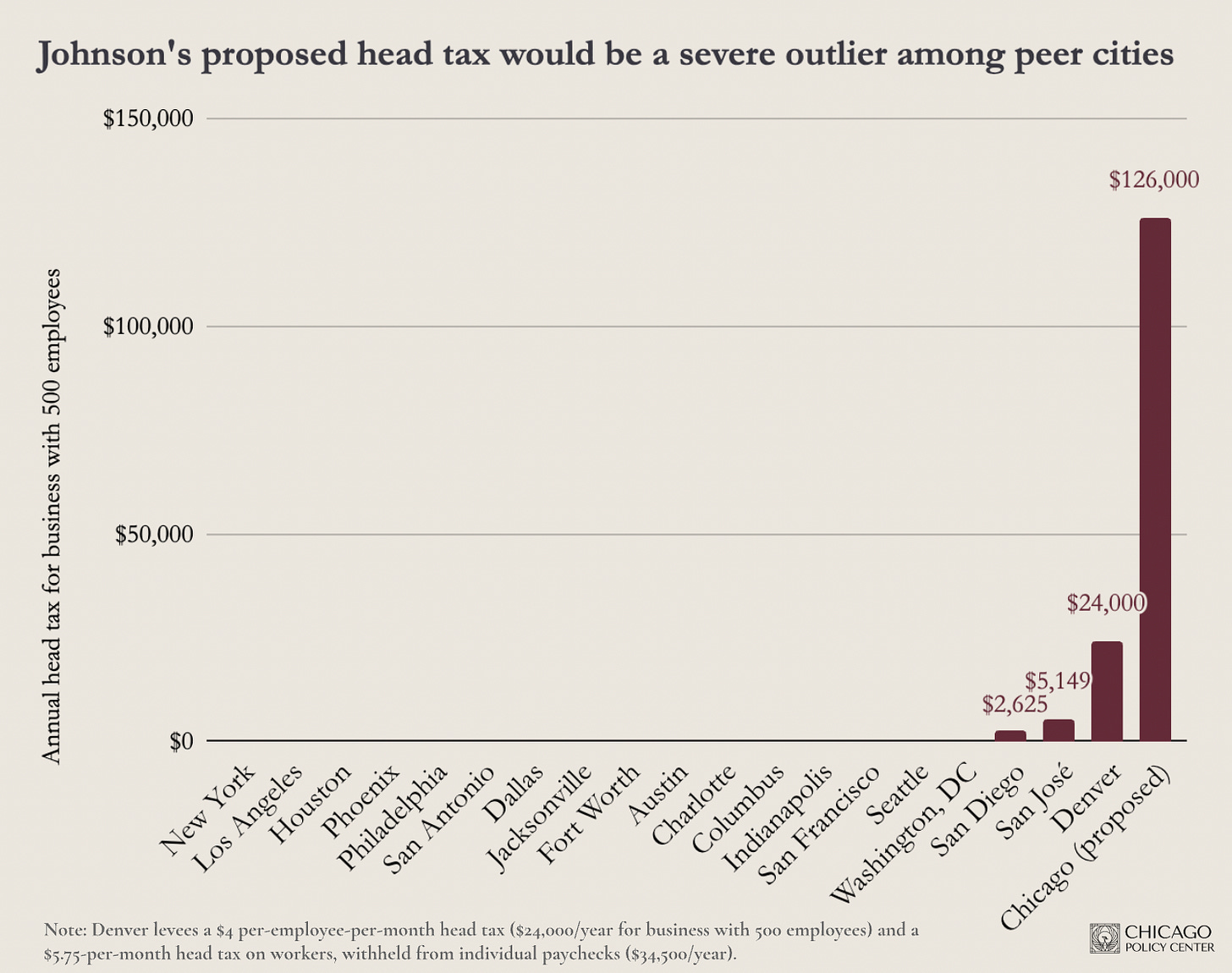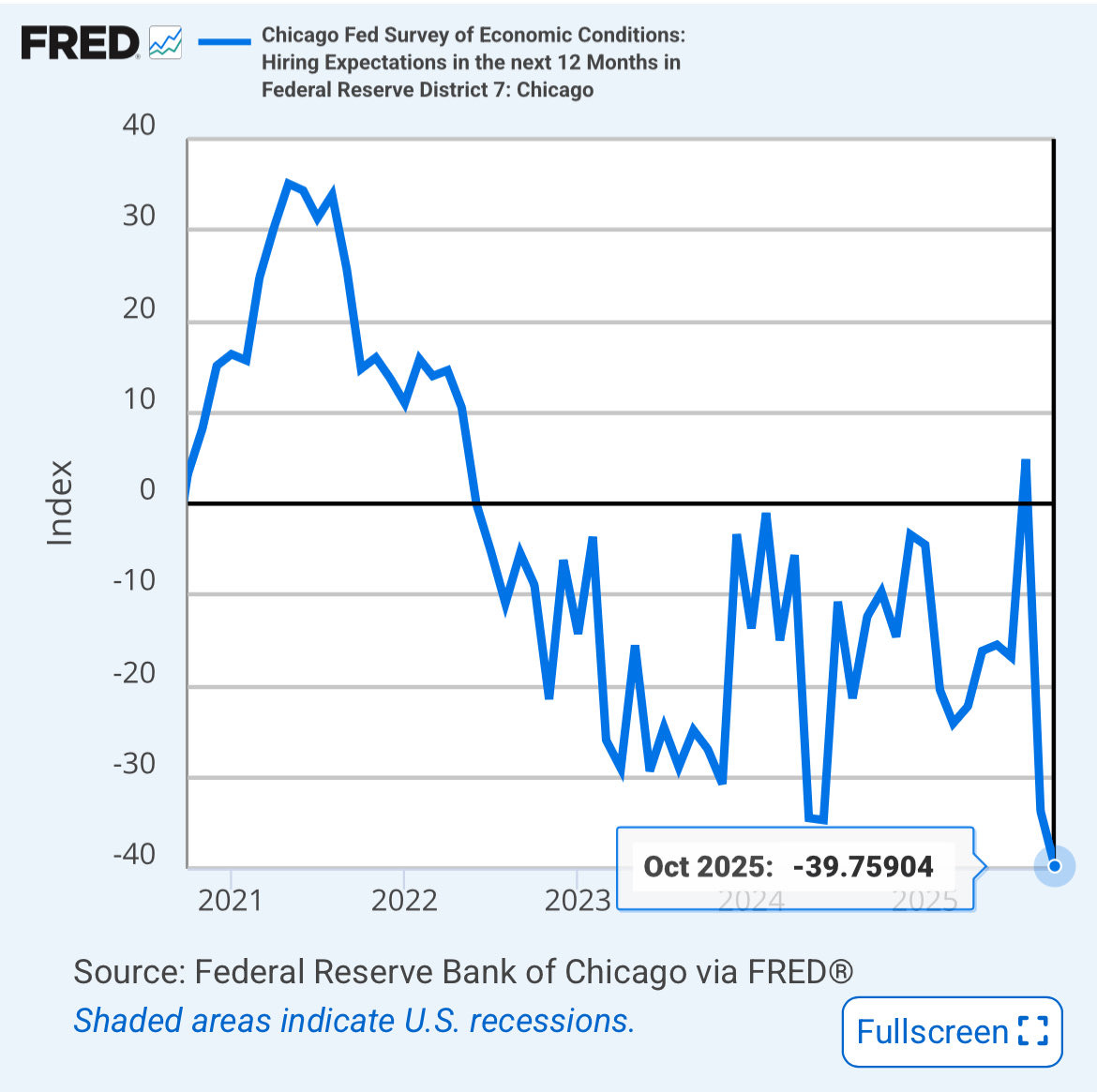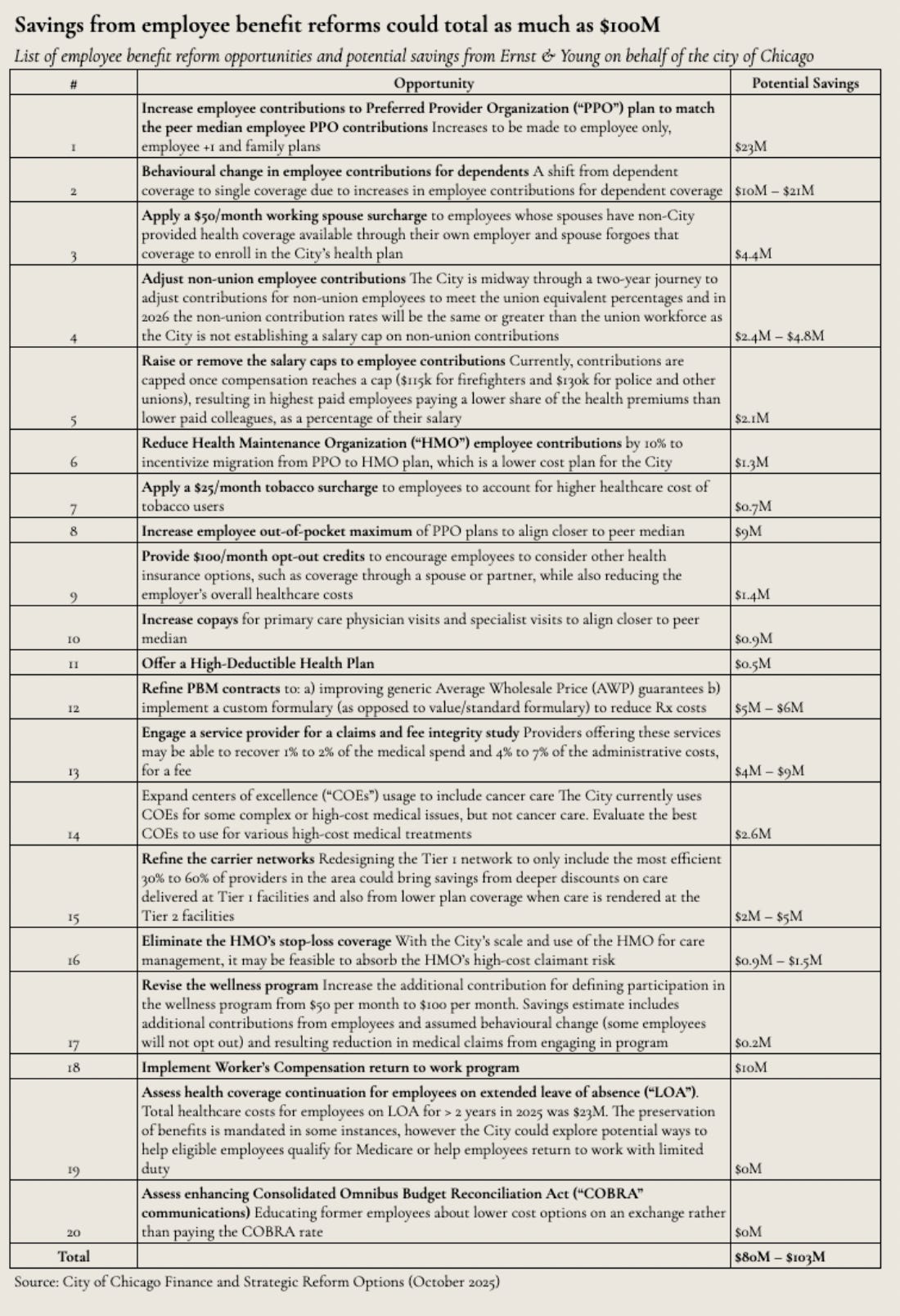Everything you need to know about Brandon Johnson’s ‘head tax’ proposal
In 1944, a curious new plant appeared in Hyde Park. It didn’t sprout from the soil. In fact, it wasn’t alive at all.
But there may be no more important plant to think about in Chicago today.
It’s called the Crusonia Plant, a thought experiment imagined by University of Chicago economist Frank H. Knight as a way to describe the magic of self-sustaining growth. Knight pictured an organism that, once planted, yields fruit year after year without further effort. A miracle!

The closest thing we have to a Crusonia Plant in real life is sustainable economic growth.1 Broad, compounding prosperity. This Crusonia Plant produces better health, richer lives, and the freedom to build meaning itself, to name just a few fruits.
In this week’s edition of The Last Ward, we’re diving into Chicago Mayor Brandon Johnson’s “head tax” proposal, why it threatens the health of Chicago’s Crusonia Plant, and what you can do to stop it.
Head tax details
As we were first to report, Johnson is proposing a head tax of $21 per employee per month for every business employing more than 100 Chicagoans. That’s $126,000 a year for a business with 500 Chicago employees.
We would be the only city among our peers charging anything close to this. Take a look.
This outlier status is why Chicago finally repealed its head tax in 2014, after charging one since 1973. Johnson wants to bring it back. And he’s trying to downplay how much it would really sting.
“We’re talking about 3% of companies who will be asked to put more skin in the game,” Johnson said. “97% of businesses won’t be impacted by this.”
But those 3% of businesses provide about one-third of all private-sector jobs in Chicago.
To his credit, Illinois Gov. JB Pritzker immediately called out the tax as a terrible idea.
“I am absolutely foursquare opposed to a head tax for the city of Chicago. It penalizes the very thing that we want, which is more employment in the city of Chicago. It makes it very hard to attract companies from outside the city to come in and harder for companies already here to stay …
“Balancing the budget for the state of Illinois and for the city of Chicago is vital. It can’t be ignored, it has to be done, but it shouldn’t be done with a head tax in the city of Chicago…”
“I am confident the city can do it. Look, you’ve got to start with efficiencies. You’ve got to go into city government—and I haven’t seen any of that in this budget so far. That’s going to have to happen because there are going to be changes. People are not going to like certain kinds of revenue enhancements that he’s got in his budget. So you’ve got to find efficiencies, and there are efficiencies to be found—some with technology, some because we have departments doing things that maybe we don’t need done. And finally, how about we do our best to attract, retain, and grow businesses in the city of Chicago, because that, again, is the best way for us to pay the bills.”
He might not know it, but the governor is talking about a Crusonia Plant.
The head tax in context
Chicago’s GDP growth since 2018 is last among the top 25 major metropolitan areas.

And the city just hit a five-year low in hiring expectations, according to Chicago Fed data released last week.
Chicago cannot afford to damage its economic growth any further.
But Johnson is branding the head tax as a “Community Safety Surcharge,” which lifts all boats through more spending on public safety.
Left unsaid is that, typically, residents expect their property tax bills to fund public safety. And businesses in Chicago already pay the highest commercial property taxes in the country. But 80% of the city’s property tax levy is consumed by pension costs.
Johnson estimates the head tax would generate an additional $100 million in tax revenue. But a recent Ernst & Young report on potential cost savings, for which Chicago taxpayers paid $3.2 million, shows another path toward that $100 million sum: asking city employees to pay the same for their benefits as their public-sector peers in cities like Houston, Los Angeles, and New York.
Chicago can and should balance its budget this year without any tax hikes, as the Chicago Policy Center lays out in our Chicago Forward plan. And for public-safety solutions that don’t require a new tax, click here.
What can you do to stop the head tax?
Contact your City Council member here, and tell them to reject Johnson’s head tax proposal.
What is Chicago’s growth strategy?
Former Mayor Rahm Emanuel offered his take on economic growth in Chicago last week in his remarks to the City Club.
“Look, for seven consecutive years, Chicago was the number one city for corporate relocations. And for seven consecutive years, Chicago was the number one city in America for direct foreign investment. And we were not on the coastline, we weren’t getting money from China, Latin America, et cetera. Why? And the answer is we had a growth strategy …”
“[W]e had five T’s. Everybody on the staff knew how to repeat it. Talent, training, transportation, technology, transparency. We knew our mantra, we knew how to recruit companies … And if you’re growing, not that it solves your budgetary problems, but it makes addressing them a lot easier …”
“We made some tough decisions, irritated some people in this room. But at the end of the day, the city was growing again after decades of actually declining population. After the 2019 census, city was not only growing population-wise, [it] was growing economically. That to me is a cornerstone for any success.”
Harvey update
The economic death spiral witnessed by residents of Harvey, Illinois, shows what happens when leaders take their eyes off the Crusonia Plant. Following last week’s edition of The Last Ward on Harvey’s financial crisis, the Bond Buyer and the Chicago Tribune editorial board weighed in – both emphasizing Illinois’ lack of Chapter 9 bankruptcy protections for deeply distressed municipalities like Harvey. Another relevant update: Harvey last week furloughed 40% of city workers, including half the fire department and more than a third of the police department.
In the news
You can listen to the live episode of the Mincing Rascals podcast recorded in Ottawa, Illinois, here, which includes a lengthy conversation on Operation Midway Blitz. The belligerence, unfortunately, continues. My “green light” recommendation: the new album “Skyways” by Estonian composer Misha Panfilov.
Full credit for this argument goes to Tyler Cowen in his book, Stubborn Attachments. Cowen draws on the moral philosophy of Derek Parfit, especially Reasons and Persons, which demonstrated that discounting the moral importance of future people merely because they live later in time is unjustified. Extending this reasoning into economics, if each future life holds equal moral weight, then sustaining and compounding economic growth today carries profound moral importance. One illustrative example Cowen uses: If the United States had 1 percentage point lower annual GDP growth from 1890-1980, our wealth would be equal to Mexico’s. Even a small, sustained increase in growth rates translates into huge welfare gains over centuries.
So, the moral imperative is to maximize sustainable economic growth, with a couple qualifiers: 1. Cowen stresses “sustainable.” If the future really matters, we can’t do things that wreck the future. Burning coal without regard for its environmental costs is one example; and 2. There are absolute human rights that should not be violated in the pursuit of economic growth. (One empirical note: Societies which are wealthier have a better record of respecting human rights.)
He sums it all up as follows: “This is a moral framework. It’s a way of thinking about politics. It puts productivity, economic growth, [and] sustainability at the center of our thought. We care about a lot of other things. We care about beautiful art. We care about justice. We care about fulfilling our duties to other people. This complex, looming, buzzing mix of stuff – in William James-like fashion. We’re never really going to figure that out. What’s the closest thing we can agree on? I’ll say it’s like, ‘the USA is better than Albania’ and working backwards. That’s the moral theory that gets you there.”





